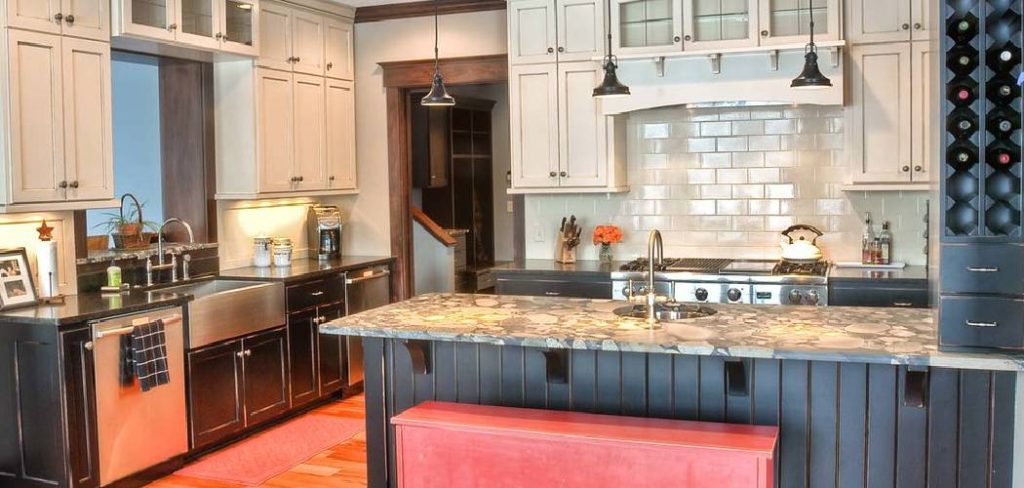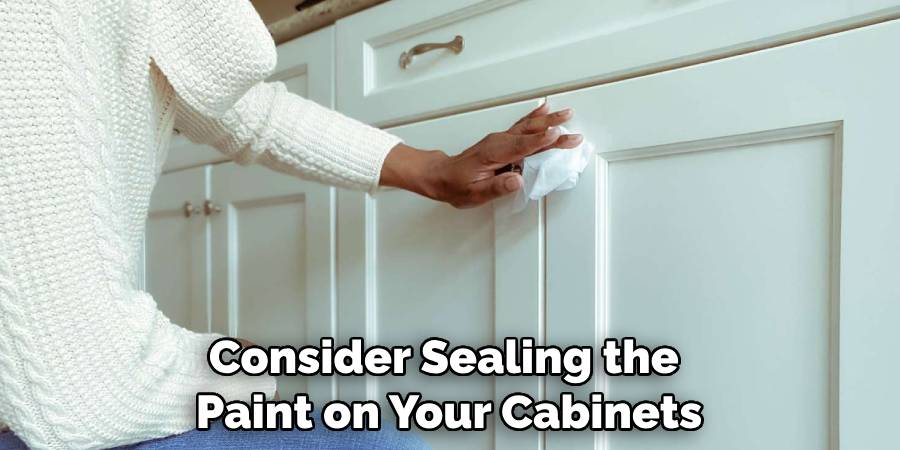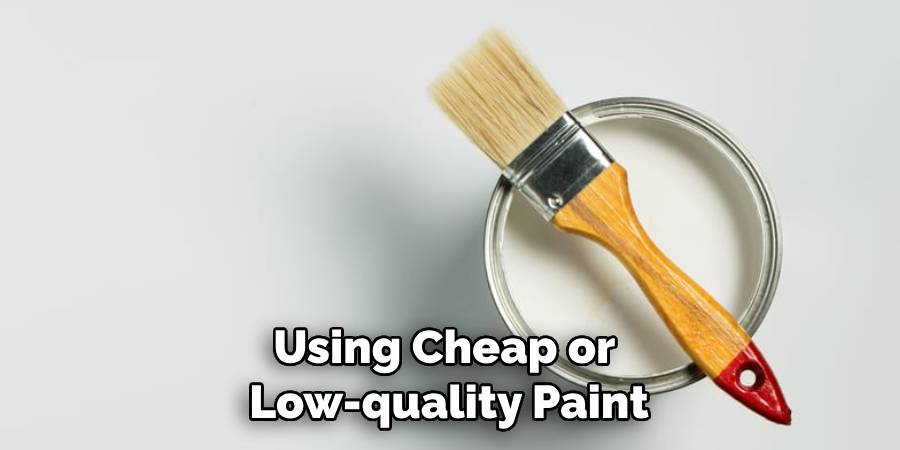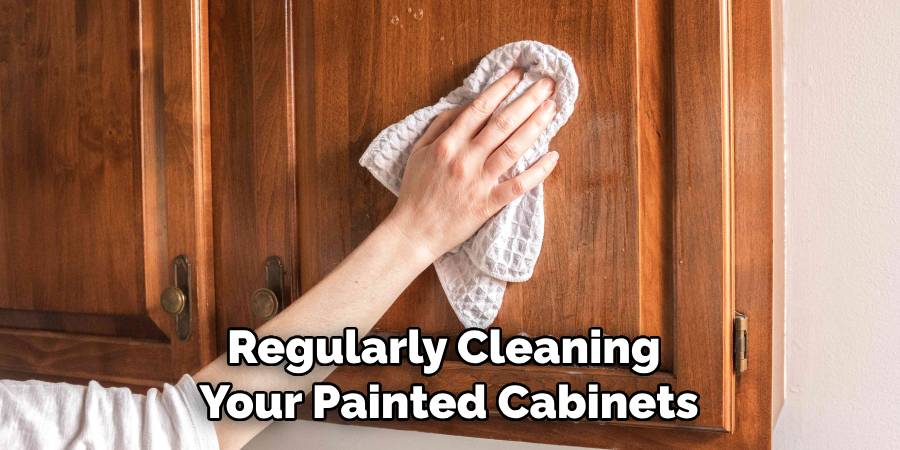Painted cabinets add a beautiful touch to any kitchen or bathroom. However, they can also be susceptible to wear and tear over time due to exposure to heat, moisture, and other factors. To keep your painted cabinets looking like new, it’s important to take steps to protect them. In this guide, we’ll go over some tips on how to protect painted cabinets.

Why Need to Protect Painted Cabinets
Before diving into how to protect painted cabinets, let’s first understand why it’s important. Painting cabinets can be a significant investment in terms of time and money, so you’ll want to make sure they last as long as possible. Without proper protection, your painted cabinets may start to chip, fade or discolor over time. This can not only affect the aesthetics of your kitchen or bathroom, but it can also decrease the value of your home. By taking preventive measures to protect your painted cabinets, you can prolong their lifespan and maintain their appearance for years to come.
Top 6 Tips on How to Protect Painted Cabinets
Here are some practical tips on how to protect painted cabinets:
1. Use Quality Paint
The first step in protecting your painted cabinets is to use high-quality paint. Cheaper, lower quality paints may save you money upfront, but they tend to be less durable and may chip or fade more easily. Look for paint specifically designed for use on kitchen or bathroom cabinets, as these are more resistant to moisture and wear.
2. Seal the Paint
To add an extra layer of protection, consider sealing the paint on your cabinets. There are several sealant options available, including polyurethane and wax. These products can help protect against scratches and stains, as well as UV rays that can cause fading.

3. Avoid Harsh Cleaners
When cleaning your painted cabinets, avoid using harsh or abrasive cleaners. These can damage the paint and cause it to chip or peel. Instead, opt for gentle cleaners specifically designed for painted surfaces.
4. Use Coasters and Trivets
To prevent heat and moisture from damaging your painted cabinets, use coasters and trivets when placing hot pots and pans on them. These simple accessories can create a barrier between the cabinets and the hot objects, preventing any potential damage.
5. Keep Cabinets Dry
Moisture is one of the biggest enemies of painted cabinets. To protect them, make sure to keep them as dry as possible. Wipe up any spills or splashes immediately and use exhaust fans when cooking to reduce humidity in the kitchen.
6. Handle with Care
Lastly, be mindful of how you handle your painted cabinets. Avoid slamming doors and drawers, as this can cause the paint to chip or crack. Also, be careful when installing hardware or hanging decorations on your cabinets, as drilling holes can also damage the paint. When installing new hardware or decorations, measure carefully and drill with precision to minimize the risk of chipping or peeling. It’s also advisable to use soft, clean cloths when cleaning or dusting your cabinets to avoid scratching the surface. By treating your painted cabinets with care and attention, you can maintain their beauty and integrity for many years to come.
Some Common Mistakes to Avoid When Painting Cabinets
While there are many things you can do to protect painted cabinets, there are also some common mistakes you should avoid when painting them in the first place. These include:

- Skipping the Prep Work: Properly preparing your cabinets before painting is crucial for ensuring the paint adheres properly and lasts longer.
- Rushing the Process: Painting cabinets takes time and patience. Rushing through the process can result in a sloppy paint job and poor results.
- Using Subpar Paint: As mentioned earlier, using cheap or low-quality paint may save you money upfront but can lead to more significant problems down the road.
- Forgetting to Label Doors and Drawers: If you remove cabinet doors and drawers for painting, be sure to label them first. This will save you time and frustration when it comes to putting them back in the right place.
How to Remove Scratches From Painted Cabinets
Despite your best efforts to protect painted cabinets, scratches can still happen. Luckily, they can be easily fixed with a few simple steps:
- Clean the area around the scratch with a gentle cleaner and dry thoroughly.
- Using fine-grit sandpaper, gently sand down the scratched area until smooth.
- Wipe away any dust or debris and apply touch-up paint using a small brush.
- Allow the paint to dry completely before applying a layer of sealant to protect the touch-up.
Additional Tips for Maintaining Painted Cabinets
In addition to protecting painted cabinets, there are a few other things you can do to maintain their appearance and prolong their lifespan:
- Regular Cleaning: Regularly cleaning your painted cabinets with a gentle cleaner can help prevent buildup and keep them looking like new.
- Avoid Excessive Sun Exposure: If possible, try to keep your painted cabinets out of direct sunlight, as UV rays can cause fading and discoloration over time.
- Inspect for Damage: Make it a habit to regularly inspect your painted cabinets for any signs of damage, such as chips or scratches. Addressing these issues promptly can prevent them from getting worse and protect the overall integrity of your cabinets.

5 Things to Consider Before Painting Cabinets
Before you even start thinking about how to protect painted cabinets, there are a few important things to consider when deciding whether or not to paint them in the first place:
- Cost: Painting cabinets can be costly, especially if you hire professionals. Be sure to budget accordingly and weigh the cost against other options, such as refinishing or replacing.
- Time: Painting cabinets can be a time-consuming project, especially if you have a large kitchen with many cabinets. Consider your schedule and availability before diving in.
- Skill Level: While painting cabinets may seem like a simple task, it actually requires some skill and technique to achieve a professional-looking finish. Be honest with yourself about your abilities and consider hiring professionals if needed.
- Current Condition: If your cabinets are already damaged or in poor condition, painting may not be the best option. It’s important to assess the current state of your cabinets before deciding on a course of action.
- Personal Style: Ultimately, the decision to paint cabinets should align with your personal style and aesthetic preferences. Consider all options and choose what will make you happiest in the long run.
Frequently Asked Questions
What Should I Use to Seal My Painted Cabinets?
If you’ve recently painted your cabinets, you’re probably wondering what you should use to seal and protect them. Sealing your painted cabinets is a crucial step that will help ensure the longevity and durability of your hard work. The best way to protect your painted cabinets is by using a clear, water-based polyurethane sealer. This type of sealer will provide a hard, protective layer over the paint, making it resistant to scratches, dings, and everyday wear and tear.
It will also help to prevent yellowing or discoloration of the paint over time. When applying the sealer, be sure to use a high-quality brush or foam roller and apply in thin, even coats. Allow each coat to dry completely before applying the next, and sand lightly between coats for a smooth finish. With proper sealing, your painted cabinets will look beautiful and last for years to come.
Should I Put a Clear Coat Over Painted Cabinets?
Applying a clear coat over painted cabinets is highly recommended. As mentioned earlier, a clear sealer can provide an extra layer of protection against scratches and stains, as well as UV rays that can cause fading. It also creates a smooth and glossy finish that adds to the overall appearance of your cabinets. Whether you choose to use polyurethane or wax, make sure to follow the manufacturer’s instructions for best results.

How Can I Make My Painted Cabinets Last Longer?
To ensure your painted cabinets remain beautiful for years to come, it’s essential to take the necessary steps to protect them. Start by applying a clear, protective topcoat over the paint, which will create a durable barrier against moisture, grease, and everyday wear and tear. When cleaning your cabinets, avoid harsh chemicals and abrasive sponges that can damage the paint.
Instead, opt for a mild, non-abrasive cleaner and a soft cloth. Regularly dust and wipe down your cabinets to prevent dirt and grime from accumulating, which can eventually lead to discoloration and damage to the paint. By following these simple tips on how to protect painted cabinets, you can keep your kitchen looking fresh and vibrant for years to come.
Conclusion
In this guide, we’ve discussed how to remove scratches from painted cabinets and provided additional tips on maintaining the appearance of your cabinets. We also covered important factors to consider before painting your cabinets and answered some commonly asked questions about how to protect painted cabinets. With proper care and maintenance, you can ensure that your hard work in painting your cabinets pays off for years to come. Remember to regularly clean and inspect your cabinets, and always use a protective topcoat to keep them looking like new. Happy painting!
